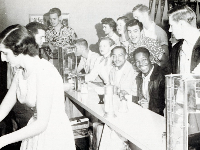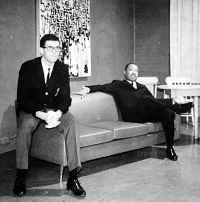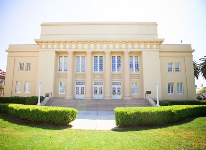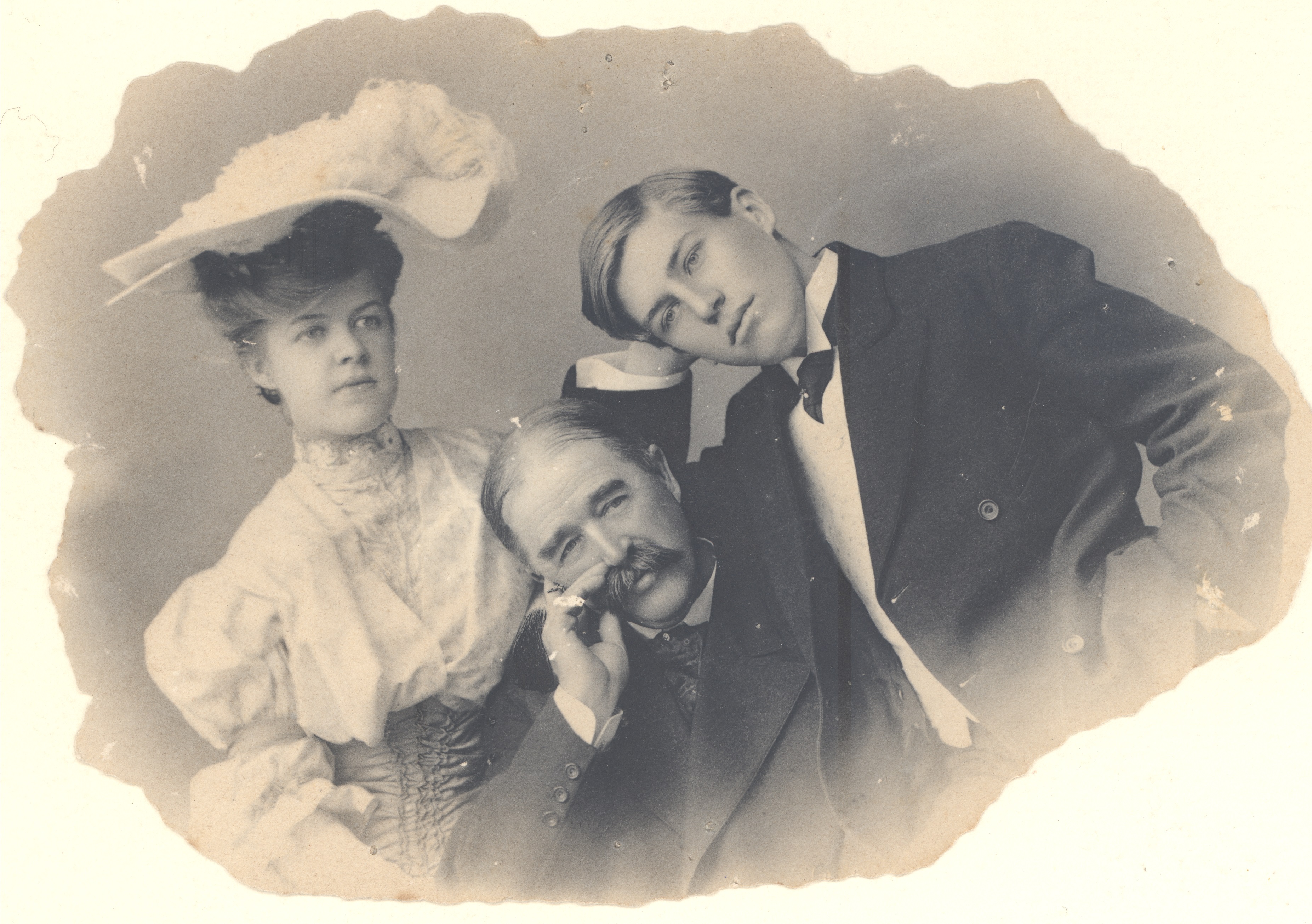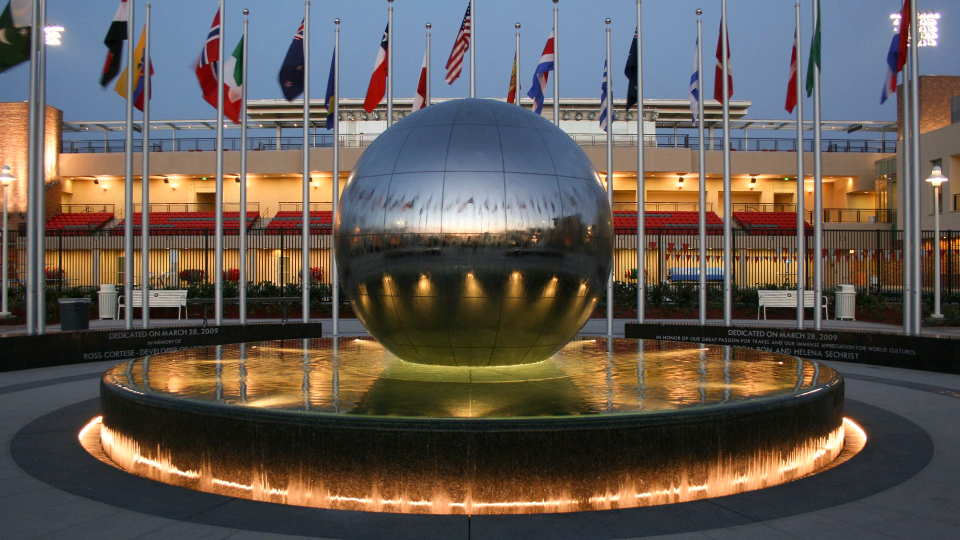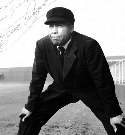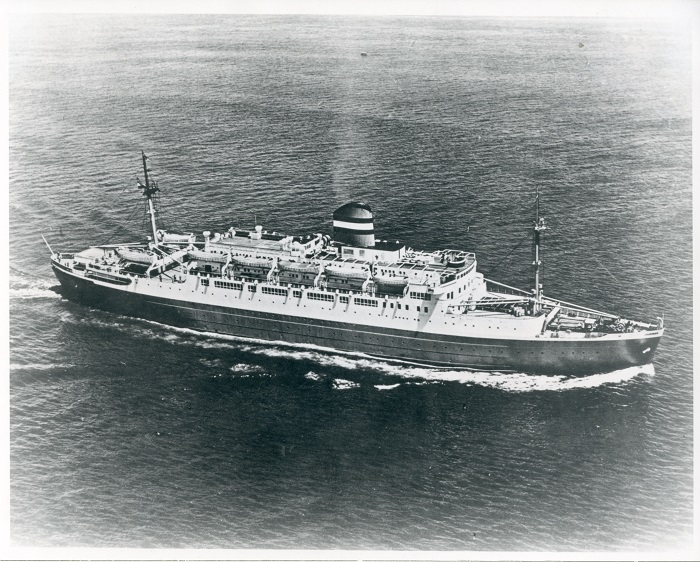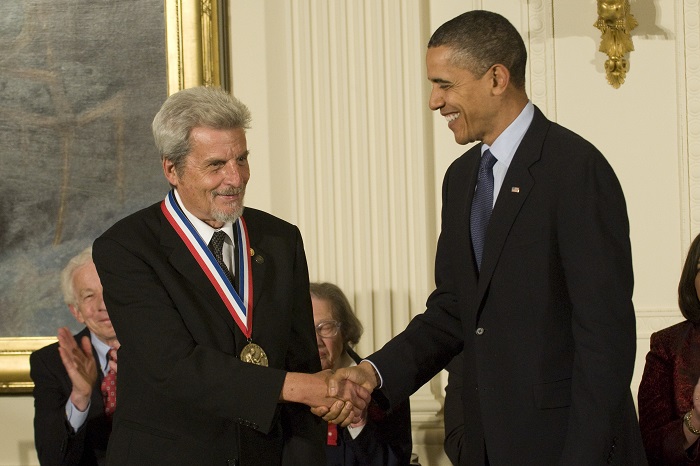
The '90s were pretty good for us — nothing succeeds like the dedicated quest to achieve
greatness. In 1991, economics professor James L. Doti became the 12th president of
Chapman College. We revived an old tradition: we changed names again and became, as
you know us now, Chapman University. Doti’s administration ushered in transformational
progress for Chapman University, launching an academic trajectory that included the
steepest 25-year climb in the U.S. News and World Report college rankings of any university since the rankings began.
These monumental moments spurred further developments for our campus. 1991 also saw
the transformation of the Department of Education into the School of Education (now
known as the Donna Ford Attallah College of Educational Studies) and the establishment
of what is now known as Wilkinson College of Arts, Humanities, and Social Sciences.
We brought back football in 1994 after that 62-year hiatus, becoming the only four-year
university in Orange County with an NCAA football team.
And we also opened two schools that have been recognized nationally since their beginnings
in the mid-’90s. Our School of Law, now the Dale E. Fowler School of Law, opened in 1995. Since its inception, it has been recognized as one of the top 25
law schools for practical training and has ranked among the top 5 in the national
ABA Competition.
Our School of Film and Television, now Dodge College of Film and Media Arts, opened in 1996. Recognized worldwide for its cutting-edge programs and renowned
faculty, Dodge College has been notably ranked among the best film schools in the
nation consistently. Each year, students excel in competitions, and alumni’s names
will be present at award shows and film festivals. A few of the notable alumni from
Dodge College include the Duffer Brothers, creators of the award-winning television
series Stranger Things; Justin Simien, creator of the hit movie and subsequent TV series Dear White People; Brenda Brkusic Milinkovic ’04, Emmy-winning television producer and executive; and
James Smith ’01, co-producer of the blockbuster movie Drive.
We closed up the ’90s with developments that would lead to enormous transformation
for our academic community. Our business school became the George L. Argyros School
of Business and Economics in 1999 and found its home in Beckman Hall, constructed
in 1998 and dedicated in 1999.
The growth over the past two decades that resulted from the creation of the Argyros
School includes the business school’s number of full-time faculty quadrupling – more
than 7,000 graduates for a school that only had a graduating class of 179 in 1999
– and being ranked among the top 100 business schools in the nation. In 2019, we celebrated
the 20th anniversary of the Argyros School, highlighting its prominent rise and honoring its
namesake with special guest President George W. Bush.
The new turn-of-the-century ushered in vast campus expansion: the Rodgers Center for
Holocaust Education, the Leatherby Libraries, the Fish Interfaith Center, Marion Knott Studios — home of Dodge College, the College of Performing Arts, the creation of the Argyros School’s Economic Science Institute — led by Dr. Vernon
L. Smith (the 2002 recipient of the Nobel Prize in Economic Sciences), the Erin J. Lastinger Athletics Complex and the Schmid College of Science and Technology became part of the Chapman campus between 2000 and 2010.
Almost as a sign of our future focus on developing the fields of science, technology,
engineering and mathematics at Chapman University, Chapman theoretical physics professor
Yakir Aharonov, Ph.D., was awarded the President's National Medal of Science in 2010.
Our evolving approach toward the STEM fields truly began in 2013 with the opening
of the Rinker Health Science Campus in Irvine, which became the home of Chapman’s School of Pharmacy — established that same year. A portion of Schmid College gained autonomy as the
Crean College of Health and Behavioral Sciences the following year. Most graduate programs in Crean College are housed on the Rinker
Campus.
The inauguration of Daniele C. Struppa, a renowned mathematician, as president of
Chapman University in 2016 further illustrated our leadership’s dedication toward
the STEM fields. Having served as Chapman’s chancellor for nine years, Daniele C.
Struppa gracefully stepped into the role of president, prepared to lead our University
and its great minds from all over the world.
The arts remained just as important to Chapman’s future development. 2016 also saw
the opening of the acclaimed Musco Center for the Arts, an 1,100-seat state-of-the-art concert hall hailed by the Los Angeles Times as “an ideal opera house, potentially the best in the West;” as well as the Hilbert
Museum of California Art, which is now a top-ranked California attraction on Yelp
and Tripadvisor, drawing more than 30,000 visitors per year. Both of these critically
acclaimed venues have exponentially elevated our students’ access to professional
arts offerings and have helped distinguish Chapman University as a focal point for
the arts in Orange County.
With the opening of the Keck Center for Science and Engineering in 2018, Chapman University
launched itself toward an era of innovation, research and discovery. As the home of
Schmid College and the recently opened Dale E. and Sarah Ann Fowler School of Engineering,
the Keck Center plays a crucial role in the development of a notable scientific community
at Chapman as well as the cultivation of a strong research community in Southern California.
As Chapman continues to grow, we’ve seen national recognition for our unrivaled efforts.
We were invited to establish a chapter of our nation’s oldest honors society, Phi
Beta Kappa. We achieved the Carnegie Classification of R2: Doctoral University — High
Research Activity in recognition of our commitment to research. We had our first Rhodes
Scholar, Vidal Arroyo ’19. And, perhaps most importantly, we were ranked by U.S. News
& World Report in the National University category, an elevated category that includes
institutions of higher education like Harvard and Princeton. Such a distinction acknowledges
our rising reputation, student excellence, world-class faculty and growing research
programs.
As we get bigger, we're also getting better. We're ambitious, we're confident — and
we're comfortable with that.
At every stage, in every era, we find growth. Whether it's a test of our ethos, our
endurance, our will to survive, our growth in spirit or our growth in offerings, we
keep moving forward. Our most recent accomplishments are, of course, both humbling
and gratifying, but they exist as stepping-stones toward the next echelon.
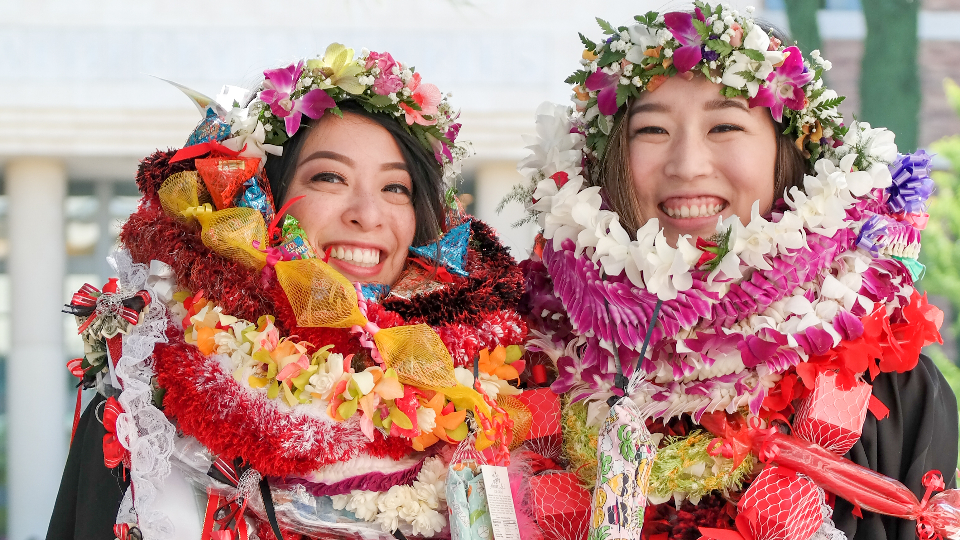

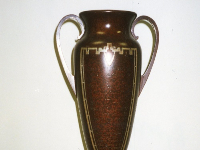 One of the oldest awards presented by Chapman, the Cheverton Award was first bestowed
upon the university’s top graduate in 1930. The original bronze cup was a gift of
the Class of 1929 and remains on permanent exhibit in the Argyros Forum on campus,
along with its successor, a silver bowl.
One of the oldest awards presented by Chapman, the Cheverton Award was first bestowed
upon the university’s top graduate in 1930. The original bronze cup was a gift of
the Class of 1929 and remains on permanent exhibit in the Argyros Forum on campus,
along with its successor, a silver bowl.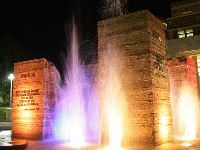 At Chapman, we holistically educate each person through a focus on what we call The
Four Pillars: the intellectual, physical, social and spiritual dimensions of life.
At Chapman, we holistically educate each person through a focus on what we call The
Four Pillars: the intellectual, physical, social and spiritual dimensions of life. The earliest incarnation of our beloved mascot "Pete the Panther" got his start in
Hollywood.
The earliest incarnation of our beloved mascot "Pete the Panther" got his start in
Hollywood.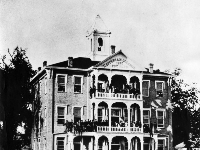
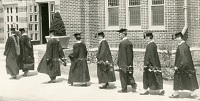
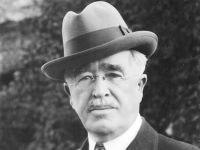
 During World War II, we gave it our all — literally. When our students left to fight,
nurse, build or otherwise aid the war effort, we rented our entire campus on North
Vermont Avenue in Los Angeles to the U.S. Navy for the duration of WWII. We kept one
faculty member on and a handful of students who took up lodgings at Whittier College
for three years.
During World War II, we gave it our all — literally. When our students left to fight,
nurse, build or otherwise aid the war effort, we rented our entire campus on North
Vermont Avenue in Los Angeles to the U.S. Navy for the duration of WWII. We kept one
faculty member on and a handful of students who took up lodgings at Whittier College
for three years.